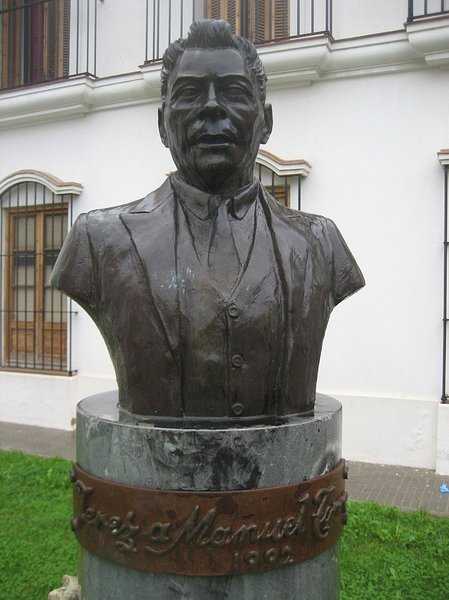Manuel Torre

Full name
Date of birth
Place of birth
Biography
Manuel Soto Loreto el Torre was born in Jerez in calle Álamos, number 21, on the 4th of December 1880 and died on the 21st of July 1933 in Sevilla in calle Amapola, number 4, surrounded by his greyhounds, cockerels and his family It is uncertain as to where his nickname came from, it is unclear if it is Torres or Torre -towers or tower His father was a worker on the Las Torres plot, between Algeciras and Los Barrios, but it is also said that this name originates from his great height for that era, as he measured 1,78 m. He grew up listening to songs at all hours. Not surprisingly, the magnificent singer of 'seguiriyeros´ Joaquín Lacherna from Jerez was the brother of his mother. His father wanted to turn him, despite everything, into a slaughterman or a fisherman, but didn´t succeed From very young, El Torre worked in cafés cantantes in Jerez, such as la Vera Cruz, Juan Junqueras´ and La Primera. He was only twelve years only when he left Santiago and San Miguel to sing in a festival in Lebrija accompanied by Javier Molina.
Antonio Chacón took him to Sevilla on his return from Zaragoza, where he had done his military services. He appeared in the Novedades along with La Serrana, daughter of the mythical singer of 'seguiriyeros´ Paco la Luz. At this time Manuels´ strength were his 'tangos´. In 1909 he recorded his first record for Odeón accompanied by Juan Gandulla Habichuela from Cadiz.
He was a womaniser, and is attributed a multitude of romances. He had two official women: the dancer Antonia la Gamba, with who he had two sons, Juan and Tomás, and María Loreto, mother of five children: Tomasa (who married Perrate), María, Amparo, Gabriela and Consuelo.
He participated as a guest artist in the Granada Competition in 1922, where he consolidated his relation with Federico García Lorca, who wrote such things about him as «he´s the man with the most culture in his blood I have ever known », that «he is the lighthouse of flamenco song », that «he broke the shine of the mirrors », that he emitted «dark sounds » or that «he was the representation of flamenco enchantment ». In Granada El Torre recorded two more albums.
He always feared big stages and often refused to participated in flamenco operas but ended up giving in to many offers. In 1928 he records for Odeón again accompanied by the guitar of Miguel Borrull, son. One year later he recorded his legendary 'seguiriya´, inspired by Curro Durse, Eran los días señalaítos, for the label Gramófono. He recreated the version of the Campanilleros, a song of the Rosario de la Aurora which Manuel had heard in a festival in Huelva and which he adapted to flamenco style one night in Sevilla along with Niño Ricardo, El Gloria and the bullfighter El Niño de Palma.
Manolo Caracol took advantage of its fame and used it on tour El Majareta, as he was also known for his strange enthusiasm for greyhounds and fighting cockerels, is presented as the King of the Gypsy song. However his days ended calle Amapola, when became most famous, by tuberculosis enveloped in misery. So much so that Pepe Marchena had to organise a recital in his benefit in the bull ring in Sevilla and brought horse drawn carriages from Jerez for the funeral. However before this he left 51 songs recorded and above all, a legend increased by the admiration that Antonio Mairena felt for him, his main defender recently. He recorded a total of 26 records, one of them with La Serrana However, it is fair to say that these recordings don´t do him justice, although they show a monumental singer of 'seguiriyero´ without rival in history.




